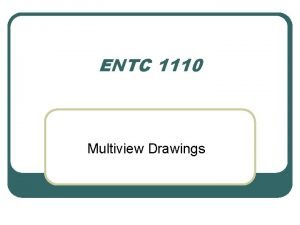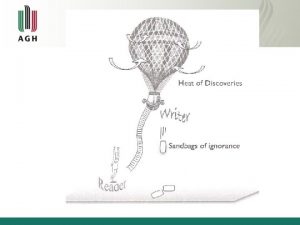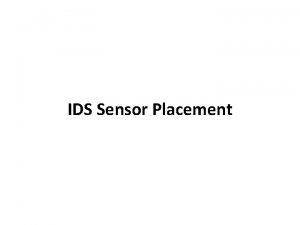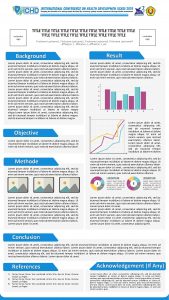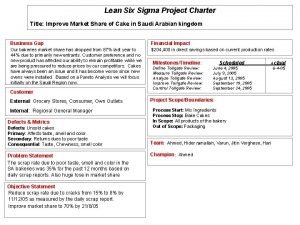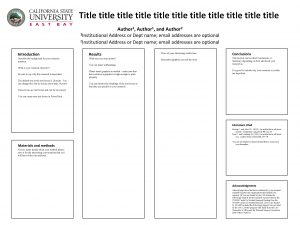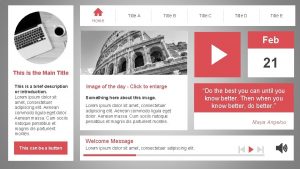Six Techniques for improve your Title I Placement






















- Slides: 22



Six Techniques for improve your Title I – Placement of contribution upfront in a title. Readers expect to see the contribution of a paper at the same place in each title: its beginning. The contribution is followed by the scope, the method or the application: “Web services – an enabling technology for trading partners community virtual integrating”. “Web services: integrating virtual communities of trading partners”. “A new approach to blind multi-user detection based on inter symbol correlation. ” “Self-installing substation for insular tidal-energy forms. ”

Six Techniques for improve your Title II – Addition of verbal forms A title without a conjugated verb lacks energy. Nouns do not have the action-packed strength of verb. The gerundive and infinitive verbal forms add energy to a title without a conjugated verb. “Nonlinear Finite Element Simulation to Elucidate the Efficacy of Slit Arteriotomy for End-to-side Arterial Anastomosis in Microsurgery”. “Data learning: understanding biological data”. “Web services: integrating virtual communities of trading partners”.

Six Techniques for improve your Title III – Adjectives and numbers featuring qualitative or quantitative aspect of the contribution. Adjectives and adverbs are also used to attract – fast, highly efficient or robust. They enhance the contribution. Since adjectives are subjective, replacing them with something more specific is always better. 100 MHz DCT processor -> fast DCT processor Do not use “new”, “novel” or “first” which are informative because a contribution should be new, novel and first anyway.

Six Techniques for improve your Title IV – Clear and specify keywords. Specific keywords attract the experts. The specificity of the paper is proportional to the number of specific keywords in its title. Beware of keywords buried in long modified nouns whose clarity is inversely proportional to the length of the modified noun. To clarify such nouns, add prepositions. “Transient model for kinetic analysis of electric-stimulus responsive hydrogels”. “Transient model for kinetic analysis of hydrogels responsive to electric stimulus.

Six Techniques for improve your Title V – Smart choice of keyword coverage. Breadth Domain - genre High frequency Intermediary Specific Depth Low frequency

Six Techniques for improve your Title V – Smart choice of keyword coverage. General keywords (simulations, model, chemical, image recognitions, wireless network. Intermediary keywords are better at differentiating power. There are usually connected with filed of the research. (fast Fourier Transform, clustering, microarray) Rarely used specific keywords describing title for the experts. (hyper surface, hopcount localization).

Six Techniques for improve your Title VI – Catchy attention-getting schemes. It is important to built a fun and memorable acronym that everyone going to remember it. “Visor: learning VIsual Schemes in neural networks for Object Recognition and scene analysis. ” -> VISOR “Basic Local Alignment Search Tool. ” -> BLAST

Purpose and Qualities of Titles. Purpose of the title for the reader: • It helps the reader decide whether the project is worth reading further. • It gives the reader a first idea of the contribution: a new method, chemical, reaction, application, preparation, compound, mechanism, process, algorithm or system. • It provides clues on the paper’s purpose (a review, an introductory paper), its theoretical level, and its nature. By the same means, it helps the reader assess the knowledge depth required to benefit from the work. • It informs on the scope of research, and possibly on the impact of the contribution.

Purpose and Qualities of Titles. Purpose of the title for the writer: • It allows the writer to place enough keywords for search engines to find the title. • It catches the attention of the reader. • It states the contribution in a concise manner. • It differentiates the title from other titles. • It attracts the targeted readers, and filters out the un-targeted readers.

Qualities of a title UNIQUE – it differentiates your title from all others LASTING – Do not to use new in a title that outlives you. CLEAR – Avoid long modified CONCISE – Remove redundant nouns. They bring imprecision of filler words (‘study of’). If and misunderstanding. your title is already unique and easy to find without the details, CATCHY – The writer has one chance and 2 seconds to remove them. interest the reader. HONEST and REPRESENTATIVE of the contribution. It sets expectations and it fulfills them. EASY TO FIND – Its keywords are carefully chosen.


The four parts • PART 1 – What is the problem? – What is the topic, the aim of this project? • PART 2 – How is the problem solved, the aim achieved (metodology)? • PART 3 – What are the specific results? – How well is the problem solved? • PART 4 – So what? – How useful is this to Science and to the reader?

Coherence between Abstract and Title Keywords: Slit, Arteriotomy, End-to-side, Arterial, Anastomosis, Microsurgery, non-linear, finite element, simulations (TITLE) Nonlinear Finite Element Simulations to Elucidate the Efficacy of Slit Arteriotomy for End-to-side Arterial Anastomosis in Microsurgery. (FIRST SENTENCE) The slit arteriotomy for end-to-side arterial Microanastomosis is a technique used to revascularize free flaps in reconstructive surgery. 66% - 6 words

Coherence between Abstract and Title In our sample abstract, 6 out of the 9 words were in the first sentence, tree still missing. But they were in the rest of the abstract. (…we propose a non-linear finite-element procedure to simulate the operations…)

Three techniques to gauge the quality of your abstract 1. Abstract have four parts (and optional part for just-intime explanation of obscure title words as seen in our sample abstract). The part that represents your contribution should be the most developed. 2. Abstracts repeat all title words. A possible expectation to this recommendation is when you use alternative keywords because a particular concept is expressed by two equally probable keywords. You then use one keyword in the title, and the other equally probable keywords in the abstract. 3. Abstracts expand the title in the first one or two sentences because the reader expects it.

Purpose and Qualities of Abstract Purpose of the abstract for the reader: • It clarifies the title. • It provides convincing details on the writer’s scientific contribution. • It helps the reader decided whether the rest of the article is worth buying or downloading for further reading.

Purpose and Qualities of Abstract Purpose of the abstract for the writer: • Because it has more keywords than the title, the abstract allows the paper to be found more easily. • It states the writer’s contribution in more precise detail than the title to persuade the reader to read the rest of the paper. • When written early in the life of a paper, it guides the writing and keeps the writer focused.

Purpose and Qualities of Abstract The abstract in NOT to be used for the following: • To mention the work of other writers, except when your project is an extension of a single previously wrote project, yours or that of another author. • To justify why the problem you have chosen is significant: the significance of your impact on the problem is the one that matters the most.

Qualities of a abstract TIDE TO TITLE – All title words are in the abstract. COMPLETE – It has four parts (what, how, results, impact) PRECISE – when describing CONCISE – Not longer than contribution. necessary, as a courtesy to the reader. Research is justified through significance of results, PRESENT – Real. News. not significance of problem. STAND-ALONE – It lives by itself in its own world database of abstracts, journal abstract. It may include the main key visual in the future. REPRESENTATIVE – of the contribution of the paper. It sets expectations. It encourages the reader to read the paper.

 Draw the six principal views
Draw the six principal views Lodi unified school district board meeting live
Lodi unified school district board meeting live Writing and completing reports and proposals
Writing and completing reports and proposals Title title
Title title Classify each polygon
Classify each polygon Give us your hungry your tired your poor
Give us your hungry your tired your poor Fonction technique scooter
Fonction technique scooter Iso 22301 utbildning
Iso 22301 utbildning Typiska drag för en novell
Typiska drag för en novell Nationell inriktning för artificiell intelligens
Nationell inriktning för artificiell intelligens Vad står k.r.å.k.a.n för
Vad står k.r.å.k.a.n för Shingelfrisyren
Shingelfrisyren En lathund för arbete med kontinuitetshantering
En lathund för arbete med kontinuitetshantering Särskild löneskatt för pensionskostnader
Särskild löneskatt för pensionskostnader Personlig tidbok fylla i
Personlig tidbok fylla i Sura för anatom
Sura för anatom Densitet vatten
Densitet vatten Datorkunskap för nybörjare
Datorkunskap för nybörjare Tack för att ni lyssnade bild
Tack för att ni lyssnade bild Mall för debattartikel
Mall för debattartikel Delegerande ledarstil
Delegerande ledarstil Nyckelkompetenser för livslångt lärande
Nyckelkompetenser för livslångt lärande Påbyggnader för flakfordon
Påbyggnader för flakfordon
